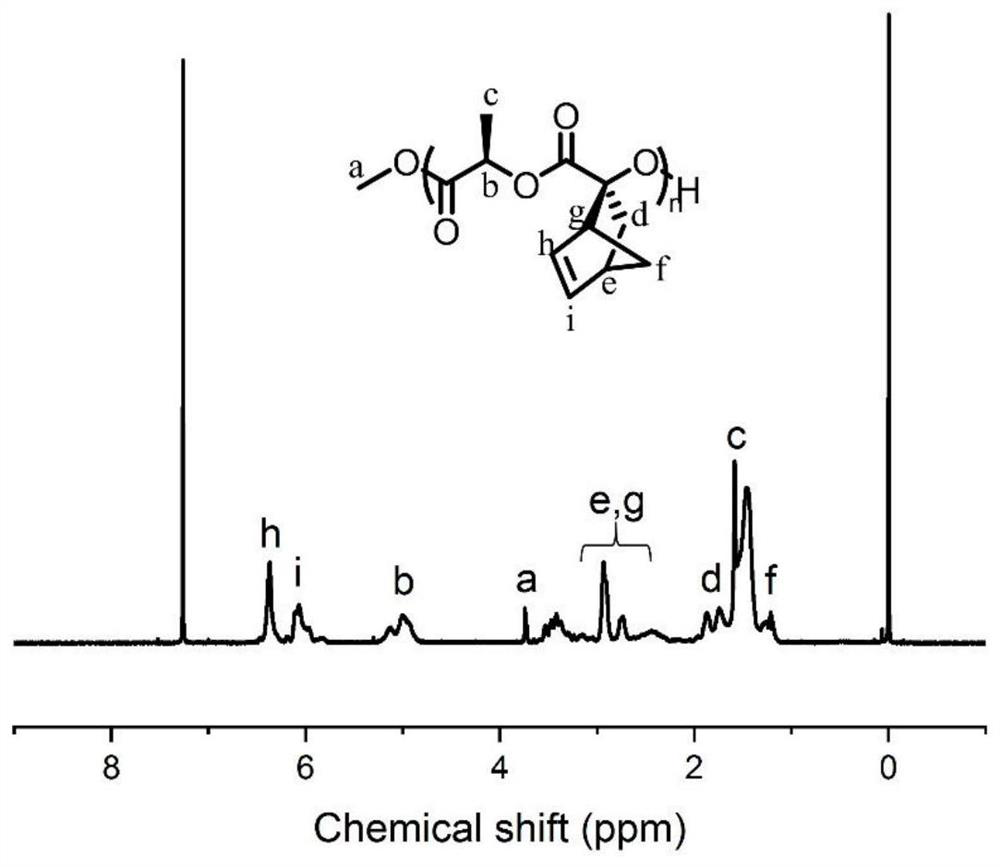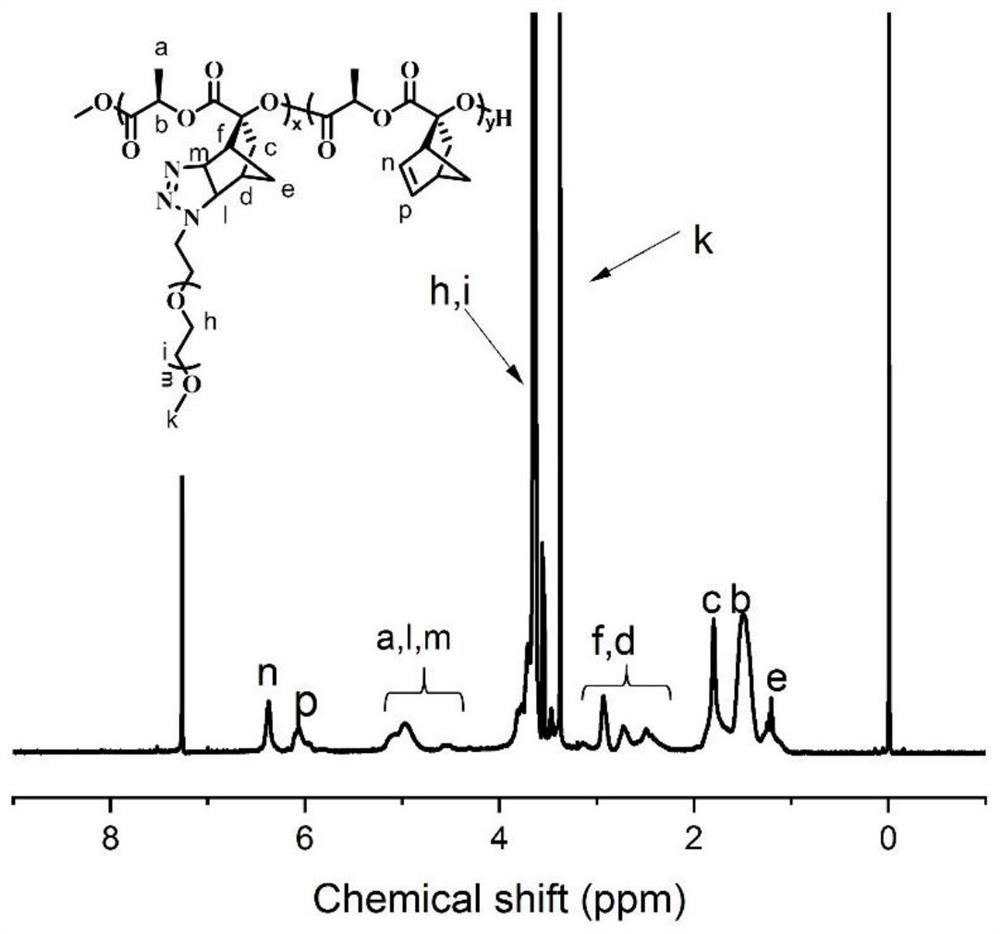A temperature-controllable easily degradable temperature-sensitive polymer and its preparation method
A temperature-sensitive polymer, easy to degrade technology, applied in the direction of pharmaceutical formulations, medical preparations of non-active ingredients, etc., can solve the problem that the phase transition temperature cannot be adjusted at will, the bioavailability of drugs is low, and the temperature-sensitive polymer is not degradable To achieve the effect of improving the utilization rate of drugs, meeting the requirements of industrial production, and being easy to control the temperature
- Summary
- Abstract
- Description
- Claims
- Application Information
AI Technical Summary
Problems solved by technology
Method used
Image
Examples
Embodiment 1
[0050] 1. Preparation of polylactide containing norbornene side groups:
[0051] First, the ampoule was repeatedly baked 3 times under vacuum, then, 3 g of norbornene-functionalized lactide monomer was added to the ampoule under argon gas, and 0.1 g of catalyst TBD was added with a steel spoon at the same time. , inject 3 ml of refined dichloromethane containing the initiator anhydrous methanol prepared in advance, react at room temperature for 24 h, and then use anhydrous methanol as a sedimentation agent to settle once to obtain a polypropylene containing norbornene side groups. Lactide, which has a degree of polymerization of 16 (ie, n=16). Its structure was characterized by hydrogen NMR spectroscopy ( figure 1 ),The molecular weight distribution( Image 6 A), indicating that the polymer was successfully synthesized.
[0052] 2. Preparation of polylactide-g-polyethylene glycol monomethyl ether copolymer:
[0053] Add 2 g of the obtained polylactide containing norbornene...
Embodiment 2
[0061] Other steps and experimental conditions are as in Example 1, except that the end-group azide-modified polyethylene glycol monomethyl ether 550 is replaced with end-group azide-modified polyethylene glycol monomethyl ether 350 or end-group azide-modified polyethylene glycol monomethyl ether 350. Ethylene glycol monomethyl ether 750. The relationship between the transmittance and temperature of the prepared polylactide-g-polyethylene glycol monomethyl ether copolymer containing pendant isopropyl amide groups in water is as follows Figure 8 shown.
Embodiment 3
[0063] Other steps and experimental conditions are the same as in Example 1, except that the molar ratios of polyethylene glycol monomethyl ether 550 modified with terminal azide and isopropyl amide groups were adjusted to 1:0.38; 1:0.51; 1:0.68; 1:1.04; 1:1.36; 1:1.45. The relationship between the transmittance and temperature of the prepared polylactide-g-polyethylene glycol monomethyl ether copolymer containing pendant isopropyl amide groups in water is as follows Figure 9 shown.
PUM
| Property | Measurement | Unit |
|---|---|---|
| wavelength | aaaaa | aaaaa |
Abstract
Description
Claims
Application Information
 Login to View More
Login to View More - R&D
- Intellectual Property
- Life Sciences
- Materials
- Tech Scout
- Unparalleled Data Quality
- Higher Quality Content
- 60% Fewer Hallucinations
Browse by: Latest US Patents, China's latest patents, Technical Efficacy Thesaurus, Application Domain, Technology Topic, Popular Technical Reports.
© 2025 PatSnap. All rights reserved.Legal|Privacy policy|Modern Slavery Act Transparency Statement|Sitemap|About US| Contact US: help@patsnap.com



